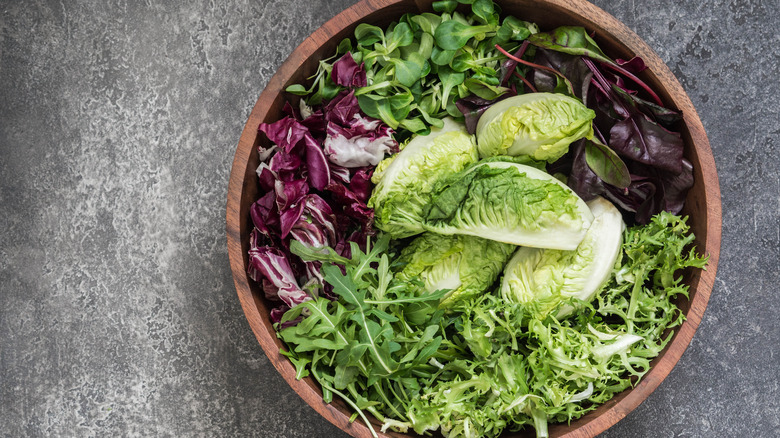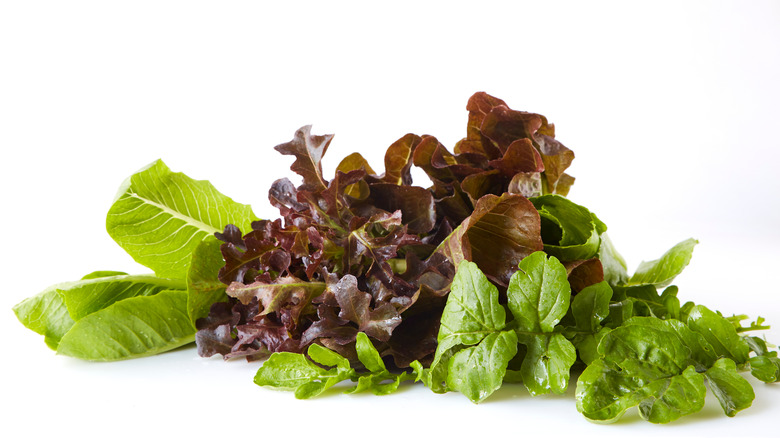Why You Should Always Use A Variety Of Greens In Your Salad
Summer is a great time for salads. Not only does a cool and crisp salad taste refreshing on a hot day, it's also super healthy — salad greens are low in calories and fat and also a fantastic source of vitamins, minerals, and phytonutrients, including vitamins A, C, K, and, depending on the variety, iron and calcium, according to Oh My Veggies. They are also one of the top dietary sources of nitrates, which offer cardiovascular benefits like a lower risk of heart disease, reports Everyday Health.
However, if you're looking at your lackluster iceberg lettuce salad and just can't quite muster up the same enthusiasm as you normally do when you order a salad at your favorite restaurant, what you're putting in (or not putting in) your salad could be to blame. If your idea of a salad is to chop up one type of lettuce or greens and a few other vegetables like tomatoes, cucumbers, and maybe carrots and call it a day, it's time to upgrade your salad game, and the first step is to add a variety of greens to your salad base.
Adding a variety of greens will help elevate your salad
One of the reasons that restaurant salads seem to taste so much better than homemade is the variety of greens that restaurants often use, which helps to elevate the salad by adding different textures and tastes, explains The Kitchn. And there's no reason you can't do that at home as well. These days, it's quite easy to get a variety of greens in your salad. Most grocery stores sell pre-mixed greens, like mesclun or spring mix, which tends to be a mixture of loose baby leaves. In many cases, these salad mixes are even pre-washed and ready to use straight out of the bag for even more convenience.
However, for the most control and customization, try coming up with the mix of greens for your salad yourself. Looking for some extra crunch? Romaine and iceberg are both good bets. Want a bit of a peppery bite to your salad? Try adding some arugula or watercress. Don't like anything bitter? Steer clear of varieties like chicories and radicchio and look towards the mellow and sweet oak leaf or the soft and buttery Boston lettuce. There are so many types of lettuce and salad greens. Try mixing them up, while keeping in mind their textures and flavors, for a salad you'll actually be excited to eat.

